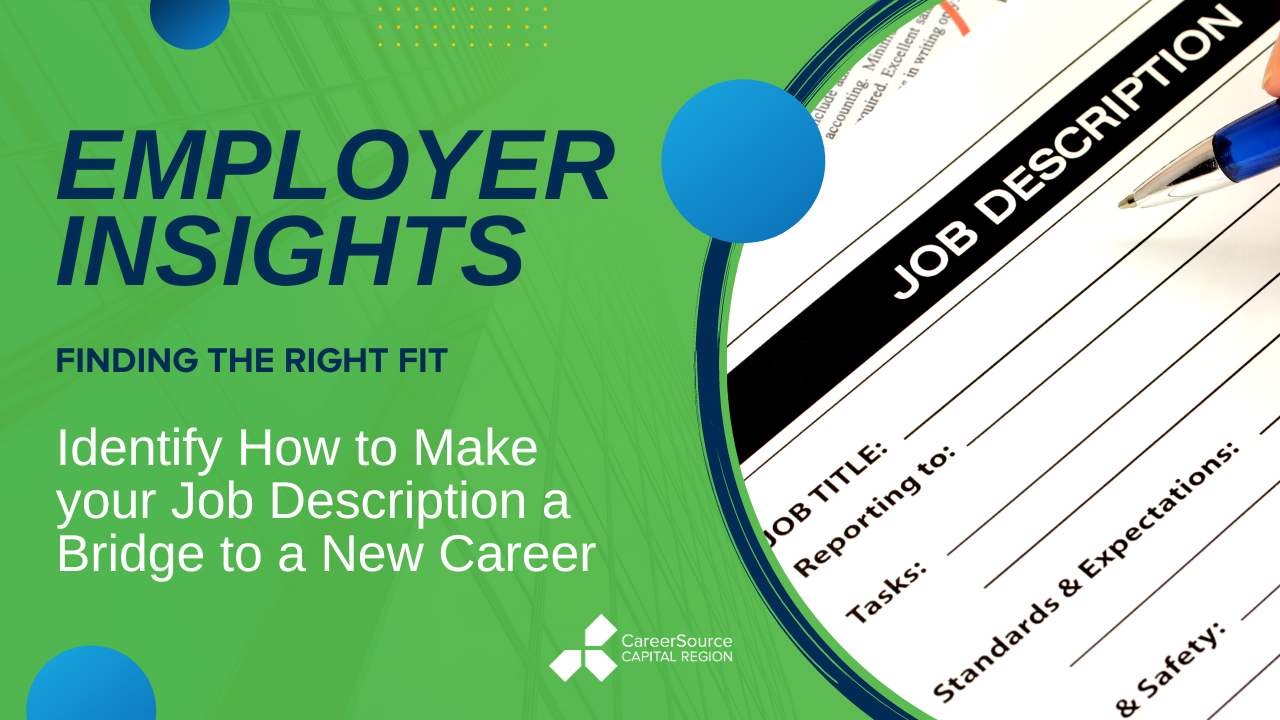Published: May 3, 2023
“Finding the Right Fit”
How to make sure your job description is a bridge to employment and not a barrier to a new career
There are more jobs than there are people… Just let that sink in for a moment. How many times have you checked to determine how many career seekers have viewed your job description versus applied for the job posting? Have you ever taken a moment to wonder what was “it” that made the career seeker move on to the next job posting instead of filling out the application? What barriers did the career seeker see or why did the career seeker think that they would not be the right fit for the job? Was it the title for the position, or was it the position description? Did the job “requirements” present a potential barrier that the career seeker felt they could not pass? I have two more questions for you, as an employer. How long has your position been vacant and when was the last time you updated the position description?
The world as we know it has forever changed as a result of the Covid-19 Pandemic, including the world of work. What does this mean for you as an employer working on job descriptions? You have to be intentional with how you are connecting to potential career seekers who are reviewing your job descriptions and applications.
There are three main areas that you can focus on when reviewing and updating your job listing:
- The title of the position
- The description of the job duties
- The job requirements
The three identified areas of focus for the employer are the same three identified areas for the career seeker because they are either going to be a bridge to connecting the employer with the job applicant or a barrier for the career seeker to either try and overcome or be blocked from successfully applying for the position.
Does your job title describe the job or is it a non-descript title?
For example Government Analyst I, or System Analyst. These are two examples of job titles that provide the career seeker with no information about what the job duties are, and could appear to be jobs that may have a lot of requirements, including experience. The title is the first barrier that the career seeker faces. Often times the career seeker will not review the job description based on the job title alone. When job titles are non-descriptive or do not match the job description it causes confusion for the career seeker.
When was the last time your job descriptions were reviewed and updated?
Who reviewed them? Do current staff have input on job descriptions when you are updating the duties and responsibilities? Current staff may be able to identify daily tasks that have been implemented but are not documented. Have you started a job and said to yourself, “this was not in the job description”? Should that task have been a part of the job description? Depending upon the job description, it may need to be reviewed and updated annually, while others may require a bi-annual review.
Are your job requirements hindering career seekers from applying?
Many jobs have requirements that are specific and necessary for the role. For example, a level II background check for certain positions within the Department of Children and Families due to reasons such as dealing with sensitive information, driving clients and safety precautions. There are some employers who use job requirements to attract certain career seekers, not realizing that this can be a double-edged sword. An employer who is hiring a person to provide custodial services within their office may require a high-school diploma or even an AA degree to fill the position. However, a career seeker who has multiple years of experience and is overly skilled for the position will not apply because they do not have their high school diploma. This is a situation where both the employer and the career seeker lost out because the career seeker saw a barrier they did not believe they could pass and moved on without applying for the position.

When reviewing the job description, what does the job really require? What does it take to get the job done?
Many young adults are digital natives and may be highly skilled in technology, but they did not obtain their education through the traditional education system. They watched YouTube and Tik-Tok videos , and simply figured it out. Their ingenuity is what tech companies are looking for, but if you require a Bachelor’s or PH. D in Information Technology and 10 years’ of experience you are going to limit your talent pool.
What background checks are required for the position? How does your organization or business work with justice-involved career seekers? Do you need a credit check for every position in the company or just the people working in the finance department? Does every position need a motor vehicle check? Make sure that you are not building barriers by creating requirements that are not necessary for the career seeker to fulfill in order to get the job done.
One of the biggest challenges that employers will face over the next few years is finding a balance between working remotely versus working onsite. The Covid-19 Pandemic proved for many types of jobs the work can get done even if people are not working in the office. Work-life balance is important to most people, and now they are not only searching for jobs that offer remote work, but in some instances demand it. Does your job descriptions clearly identify whether or not remote work is offered? If remote work is an option, include that in the job description to deepen your talent pool.
So, what should you do right now?
Think of three roles that you are aware of that need to be reviewed. Print out the job descriptions and read the description through the eyes of an applicant and highlight things that may be unclear. Then go back as the employer and review the three identified areas, Job Title, Job Description, and Job Requirements. After careful review of the three areas and the notes that you took as the applicant, update the information. Use plain language whenever possible. Once the information has been updated, make sure that you have the new document reviewed by other employees for clarity and consistency. Once the job description has been updated and approved use the new description when advertising for future vacancies.
Did you know that Career Source Capital Region can assist employers with updating their job descriptions? Contact us to learn more at [email protected].

